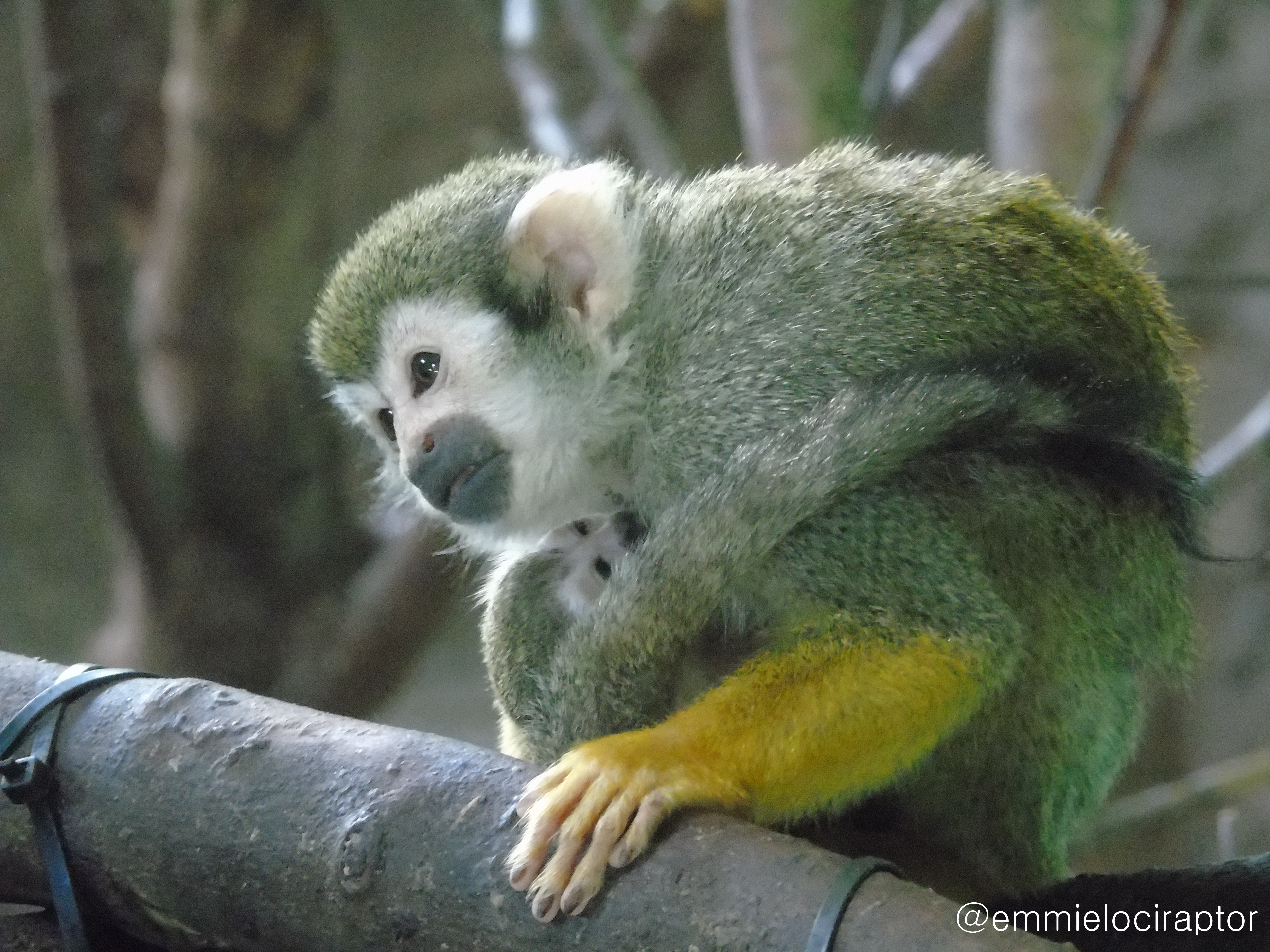We are very excited to announce that over the summer, four of our squirrel monkeys in West Group – Gerda, Jasmine, Orla and Toomi – each gave birth to a brand new beautiful baby, marking the most recent addition to our primate family tree here at the centre. Those of you who visited Living Links over the summer might have noticed these adorable yellow “fur balls” darting around their enclosure (with their mothers not far behind, trying to keep up!). The recent births have given researchers and staff an exciting opportunity to learn more about squirrel monkey behaviour. Here are some interesting facts about squirrel monkey infant development, along with videos of the new babies with their mums (click on the links to play)!
Within the lifetime of a squirrel monkey, which is roughly 25 years in captivity, a female can give birth to as many as 10 or more individuals. Typically, females reach adulthood around the age of 2 ½ years, and become pregnant soon after (usually by the alpha male of their group). After a gestation period of around 147 days, pregnant squirrel monkeys finally give birth to a single baby. Most births take place at night, and labour usually lasts around 1-2 hours.
Two of our mothers – Gerda and Jasmine – are over 15 years old, and are the oldest and most prolific matriarchs of their group. Collectively, these two mums have given birth to an impressive 13 monkeys, or roughly 70% of West Group! Orla and Toomi are 6 and 11 years old, and the daughters of Gerda and Jasmine, respectively. Although less experienced than their mums, with Orla having raised 3 babies so far and Toomi having raised 2, they have their mums there for guidance.
Like human infants, baby squirrel monkeys are born with limited motor coordination which, along with their eyesight, improves over time. As you can see in the following video, during this vulnerable stage of development, the babies learn to move around and explore their environment from the safely of their mums’ backs.
Baby squirrel monkeys initially cling to the stomachs of their mums following birth, which as you can see in the video below, makes it easier for suckling. Eventually, the mother will move the baby to her back, where the baby will cling until the next time it needs to nurse. But don’t worry, baby squirrel monkeys have a strong grip to keep from falling while their mums jump between branches!
After about 2-3 weeks, the babies will start to eat solid food particles that they find on their mother’s fur (that is, if she’s a messy eater!), or, as you can see in the video below, by cheekily stealing food directly from mum’s hand! Baby squirrel monkeys will continue to nurse from their mothers up until about 6 months of age, after which they are completely weaned and learn to find food on their own.
The four new babies seem to be growing quicker by the day. Now that we’re mid-way through November, each baby is showing signs of becoming increasingly independent. They nurse less, and instead eat more solid foods, like fruit, seeds, insects, and vegetables. As you can see in the video, they spend the majority of their time playing, exploring their environment, and climbing branches all by themselves.
Despite their growing independence, at the end of each day, both baby and mum will come back together to curl up and sleep. As you can see in this video, however, mum always keeps a watchful eye to protect her little ‘bundle of joy’. Clearly, a mother’s job is never done!

